|
Progressive Men of
Minnesota
Minneapolis Journal
1897
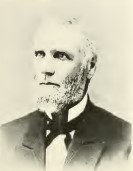 GEORGE WASHINGTON
BATCHELDER, of Faribault, Minnesota, was one of
the pioneers of that city, and during his long
residence has become one of the best-known members
of the legal profession in Southern Minnesota. In
addition to his eminence in the practice of law,
Mr. Batchelder has been conspicuous in politics;
always identified with the democratic party, he
has been its candidate at various times for
Congress, for justice of the Supreme Court, for
state senator, and for mayor of the city of
Faribault. Mr. Batchelder traces his ancestry back
for one hundred and fifty years through a long
line of New Englanders to Rev. Stephen Batchelder,
who migrated from Surrey, England, about 1730, and
settled in Hampton, Massachusetts. He was a
Congregational clergyman. Among his descendants
were Daniel Webster and John G. Whittier. The
grandfather of G. W. Batchelder was a
Revolutionary soldier. He lived at Portsmouth, New
Hampshire, and moved with his family to Vermont
about 1706. Here his son, John Batchelder married
Alice Kittridge, who was a daughter of Samuel and
Harriet Kittridge. The Kittridge family also came
from Massachusetts, and emigrated to Vermont in
1800. GEORGE WASHINGTON
BATCHELDER, of Faribault, Minnesota, was one of
the pioneers of that city, and during his long
residence has become one of the best-known members
of the legal profession in Southern Minnesota. In
addition to his eminence in the practice of law,
Mr. Batchelder has been conspicuous in politics;
always identified with the democratic party, he
has been its candidate at various times for
Congress, for justice of the Supreme Court, for
state senator, and for mayor of the city of
Faribault. Mr. Batchelder traces his ancestry back
for one hundred and fifty years through a long
line of New Englanders to Rev. Stephen Batchelder,
who migrated from Surrey, England, about 1730, and
settled in Hampton, Massachusetts. He was a
Congregational clergyman. Among his descendants
were Daniel Webster and John G. Whittier. The
grandfather of G. W. Batchelder was a
Revolutionary soldier. He lived at Portsmouth, New
Hampshire, and moved with his family to Vermont
about 1706. Here his son, John Batchelder married
Alice Kittridge, who was a daughter of Samuel and
Harriet Kittridge. The Kittridge family also came
from Massachusetts, and emigrated to Vermont in
1800.
Mr.
Batchelder attended the public schools near his
home, and fitted himself for college at Phillip’s
Academy, in Danville: entered the University of
Vermont in 1847 and graduated in 1851 receiving
the degree of A. B., and afterwards that of A. M.
He was a member of the Sigma Phi Society, and also
of the Phi Beta Kappa. To sustain himself during
his college course Mr. Batchelder taught school
during his vacations, and upon graduating, took
charge of the graded schools of Windsor, Vermont.
After one year at Windsor he went south and taught
for another year in the Academy at Tazewell, East
Tennessee. Another year was spent in teaching at
Rogersville, East Tennessee. During all this time
Mr. Batchelder was reading law, and in 1854 he was
admitted to the bar. The following year he came to
Minnesota, then a territory, and in May 1855,
settled at Faribault. He has since resided at
Faribault, and has been in continuous practice of
the law. His first law partner was Hon. John M.
Berry, late Justice of the Supreme Court of
Minnesota. When Mr.
Berry went upon the bench Mr.
Batchelder became a partner of Hon. Thomas S.
Buckham, now judge of the fifth judicial district
of Minnesota. He now has associated with him his
son, Charles, under the firm name of Batchelder
& Batchelder.
Mr. Batchelder has been frequently honored
by his fellow citizens with nomination and
election to public office, though as a Democrat in
a Republican state, county and district, the more
important nomination was frequently not equivalent
to election.
He was a candidate for Congress in 1868 for
the Southern District of the state. In 1871 and
1872 he served as state senator, and in 1888 was
nominated by his party for justice of the Supreme
Court. During the years 1880 and 1881 he was mayor
of Faribault, and for fifteen years, ending in
1892 he served as chairman of the board of
Education. Mr. Batchelder was married on July 12,
1858, to Miss Kate E. Davis, daughter of Cornelius
Davis, of Fond du Lac, Wisconsin. They have three
children; a daughter Georgia L. Batchelder and two
sons Chas. S. and John D. Batchelder both of whom
are in the legal
practice.
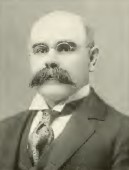 CASSIUS M. BUCK Though comparatively
but a young man as yet, Cassius M. Buck, cashier
of the Security Bank at Faribault, is, through his
strict fidelity to those principles which go to
make up business success, one of the most
successful bankers in the North Star state, having
assisted in the organization of four different
banks, and with all of which he is still
connected. CASSIUS M. BUCK Though comparatively
but a young man as yet, Cassius M. Buck, cashier
of the Security Bank at Faribault, is, through his
strict fidelity to those principles which go to
make up business success, one of the most
successful bankers in the North Star state, having
assisted in the organization of four different
banks, and with all of which he is still
connected.
He was born June 19, 1859, at Greenwood,
Wright County, Minnesota, the son of William P.
Buck and Margaret Cramer (Buck). William P. Buck
was born in Ohio, and was by occupation a teacher,
ranking high in that profession. He came to
Minnesota in 1854. At the outbreak of the civil
war he enlisted in Company D, First Battalion of
Minnesota infantry, and served throughout the war.
He was discharged at Jeffersonville, Indiana, and
mustered out with his company at Fort Snelling,
July 25, 1865; but, having contracted a fever in
front of Richmond, Virginia, he succumbed to it at
Fort Snelling before reaching home. His wife, the
mother of the subject of this sketch, was born in
Western Pennsylvania, but moved with her parents,
when quite young, to Ohio.
Cassius received his early education in the
common school at Watertown, Minnesota, and in the
graded school at Howard Lake. When but twelve
years of age he commenced clerking in the general
store of his step-father, J. V. Pearson,
continuing at this occupation for six years, with
the exception of four months each year when he
attended school. In the spring of 1880 he formed a
partnership with Mr. Pearson and engaged in the
business of shipping horses from Indiana and Iowa
to Minnesota and selling them. This line of trade
he followed until the fall of 1882, when he
purchased the hardware business of Smith Bros.
& Co., at Howard Lake, and conducted the
business for nine years, it having become the
largest hardware house in Wright county. In the
fall of 1885, in connection with Lemuel McGrew,
Mr. Buck purchased the Bank of Howard Lake (a
private bank), which they still own. Four years
later Mr. Buck organized the Bank of Dassel, now a
state bank, and has been its president since its
organization. In the
fall of 1893 he assisted in organizing the State
Bank of Annandale, and has been president of it
since its organization. In July, 1894, Mr. Buck went
to Faribault and was the principal organizer of
the Security Bank of that city. He was elected its
cashier, which position he has held since the
organization of the bank. Mr. Buck has
been very successful in his bank investments, all
the banks with which he is connected having been a
success from the time of their organization.
He is also the owner of a
number of good farms in Wright County. He has
always been a Republican in politics, and in 1888
and 1890 was congressional committeeman for Wright
County. On May 9, 1894, he was married to Sarah E.
Tolerton, daughter of James D. Tolerton, of Salem,
Ohio.
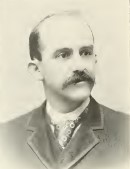 CLARENCE
PALMER CARPENTER His college the printer’s shop;
from printer’s case to the editorial chair;
newspaper publisher, attorney at law and secretary
and stockholder in a mercantile company—this, in
brief, is what has been accomplished by a young
man of energy and perseverance, without the aid of
fortune—it is, in a nut shell, the life history of
Clarence Palmer Carpenter, of Northfield,
Minnesota. CLARENCE
PALMER CARPENTER His college the printer’s shop;
from printer’s case to the editorial chair;
newspaper publisher, attorney at law and secretary
and stockholder in a mercantile company—this, in
brief, is what has been accomplished by a young
man of energy and perseverance, without the aid of
fortune—it is, in a nut shell, the life history of
Clarence Palmer Carpenter, of Northfield,
Minnesota.
Mr. Carpenter
was born at Eastford, Windham County, Connecticut,
February 4. 1853, the son of Fredus C. Carpenter
and Mary A. Gilbert (Carpenter). The father was a
native of Connecticut, and of English descent,
with a trace of Scotch blood, he is a brother of
Judge J. H. Carpenter, of Madison, Wisconsin, and
a nephew of Judge Carpenter, of the Connecticut
supreme court. He was a school teacher in early
manhood, but later in life an agriculturist. The
mother of the subject of this sketch was a native
of Massachusetts, and was a cousin of Dr. J. G.
Holland.
a prominent American author, and for many
years editor of Scribner’s Monthly and the Century
Magazine. The family came to Minnesota in
September, 1855, when Clarence was but two and a
half years old, and settled on a farm in the town
of Lebanon, in Dakota County. At this time
Minneapolis was the nearest post office to their
farm, and the lumber for the house which they
built, was rafted down from Anoka to Minneapolis
and then hauled to the farm.
His
educational advantages were limited, and were only
those that could be obtained in the early district
schools of Minnesota. At the age of sixteen he
left home to learn the printer’s trade, beginning
in the office of the Western Progress, at Spring
Valley, Minnesota. Subsequently he worked for
about two years in Faribault, and went from there
to the Twin Cities, working at different times on
nearly all the daily papers published there.
Following the usual life of the old-time printer,
and having a desire to see the country, he worked
in printing offices in a number of the larger
cities of different states. In the fall of 1877,
Mr. Carpenter took a homestead and tree claim near
Herman, in Grant County, Minnesota, going from
Faribault, where he had been employed on the
Democrat since the spring of 1876, on which paper
he did his first editorial work. For the next six
years he cultivated his claim and brought nearly
three hundred acres under cultivation. During the
winters he would devote his time to teaching
school or working at his trade. The winter of 1881
he worked as proofreader on the Daily Union, at
Jacksonville, Florida, and the following winter
worked as night editor of the Fargo Daily
Republican. In 1884 he established the Dakota
County Tribune, at Farmington, Minnesota, and
continued the publication of this paper until
August, 1892, at which time he sold it.
He
had, while working as a printer, begun reading law
for recreation, beginning with Blackstone’s
Commentaries. He kept at this for some years and
was finally admitted to the bar in September 1890,
and, in connection with the publication of his
paper at Farmington, engaged in the practice of
law. After the sale of the Tribune Mr. Carpenter
spent a few months in the East in travel.
Returning to Minnesota, he located at Lakeville
and engaged in the practice of his
profession.
He also became interested in a general
merchandise store, in connection with others
organizing a stock company known as the M. J. Lenihan
Mercantile Company, of which he is secretary and
treasurer. In January, 1895, he purchased the
Northfield Independent, enlarged the paper and put
it upon a paying basis.
Though
he usually affiliated with the Republican party,
Mr. Carpenter has always been disposed to be
independent. He was elected court commissioner of
Grant County in the fall of 1883, but did not
qualify, having removed from the county soon
after. He served as second assistant clerk of the
house in the legislature of 1887, and as chief
clerk in the session of 1889. He was a delegate
at-large from this state to the first People’s
party national convention at Omaha, in 1892, and
was one of the temporary secretaries of the
convention.
He was on the People’s party ticket twice
in Dakota County for the office of county
attorney, but the whole ticket was defeated each
time.
At present he is entirely independent in
politics, and conducts his paper on the same
policy. Mr.
Carpenter is a
member of the Odd Fellows, and was Noble Grand of
the lodge at Farmington: of the Knights of
Pythias: of the A. O. U. W., having served as
Master Workman in the Lakeville lodge, and was a
delegate to the grand lodge in 1896. He is a
member of the Methodist Episcopal church of
Northfield. July 28, 1885, he married Lulu M.
McElrath, at Eureka, Dakota County, Minnesota. Mr.
and Mrs. Carpenter have one son. Park, born May 5,
1890, and one daughter, Delphine, born September
2,
1896.
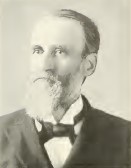 THOMAS BURR CLEMENT is a banker living
at Faribault, Minnesota. He was born on June 19,
1834 in Manlius, Onondago County, New York. His
father, Frederick Clement, was a native of Madison
County, New York, where he was born in 1799. He
came of an old family of Duchess County, New York,
whose members were prominent in the Revolutionary
War. Mr. Frederick Clement inherited the military
tastes of his forefathers, and in the old days in
New York, was prominent as an officer in the state
militia. He had four sons and three daughters, of
whom only two sons are now living. One, the oldest
of the family, Ozias, lives at the old homestead
at Manlius, and the other is the subject of this
sketch. Mr. Clement is also descended on his
mother’s side from an old Colonial family. His
mother’s maiden name was Olive Mallory and her
family were old settlers in Connecticut. THOMAS BURR CLEMENT is a banker living
at Faribault, Minnesota. He was born on June 19,
1834 in Manlius, Onondago County, New York. His
father, Frederick Clement, was a native of Madison
County, New York, where he was born in 1799. He
came of an old family of Duchess County, New York,
whose members were prominent in the Revolutionary
War. Mr. Frederick Clement inherited the military
tastes of his forefathers, and in the old days in
New York, was prominent as an officer in the state
militia. He had four sons and three daughters, of
whom only two sons are now living. One, the oldest
of the family, Ozias, lives at the old homestead
at Manlius, and the other is the subject of this
sketch. Mr. Clement is also descended on his
mother’s side from an old Colonial family. His
mother’s maiden name was Olive Mallory and her
family were old settlers in Connecticut.
As a boy, Mr. Clement lived at Manlius,
attending the common school at that place. At the
age of nineteen, after three years’ experience in
a country store, he entered business for himself.
In 1860 Mr. Clement visited Minnesota. In the
following year he repeated the visit settling
permanently at Faribault three years later, at the
age of thirty, and continuing the mercantile
business till 1868, when he organized the First
National Bank of that place. He became its
president and has remained in that position ever
since.
Mr. Clement is recognized as a “banker” in
the best sense and as distinguished from a “money
loaner.” He is quick to recognize in young men and
young enterprises the necessary elements to
success, and with these elements as security he
takes particular pleasure in helping them along
over the critical periods of inexperience and
apparent uncertainty to final independence. His
motto is: “Help others to help themselves.” As a
financier he is always able to foresee remote
consequences, and his ability is recognized beyond
the bounds of his own community. During his long
residence at Faribault, Mr. Clement has been a
conspicuous figure in the life of that
city.
He has been identified with its advances
from the condition of a small village to that of a
thriving young city. It has also been his part to
be influential in the building up of the various
educational institutions which have so
conspicuously stamped upon Faribault its high
character as a place of residence. Mr. Clement’s
fellow citizens have not allowed him to remain a
private citizen during this period. His first
official position was that of mayor of this city,
and in 1874 he was elected to the House of
Representatives of the Minnesota Legislature for
one term. He was elected to the State Senate in
1877, and was re-elected twice, serving ten years
in all.
Twenty two years ago he became a member of
the Board of Trustees of the Minnesota Institute
for Defectives. This
institute includes the State schools for the Deaf,
the Blind, and the Feeble-Minded, all of which are
located at Faribault. Mr. Clement
has been president of the board during his
membership in it, he was chairman of the Board of
County Commissioners in Rice County for three
years. During his service in the State Legislature
Mr. Clement through large acquaintance and sound
business ability was enabled to make himself a
very useful member, both for the home community
and for the state at large, he took an active
interest in the important legislation enacted
during the late 70’s and the early 80’s.
Mr. Clement was first married in 1856 to
Miss Emma Jean Johnson, daughter of Wm. A.
Johnson, of Fredonia,. New York.
They had one child, named Ellen Olive who was born
in 1857 and who is now Mrs. Charles
Hutchinson of Faribault. Mrs. Clement died in
1865. In 1867 Mr. Clement married Miss Ellen F.
Johnson, a sister of his first wife. They have had
two children, both sons. The eldest, Thomas J.
Clement, died in 1891, at the age of twenty-two
years, having married Miss Lola Coffin, of
Faribault. At the time of his death he was teller
in his father’s bank. The second son. Hurlburt
O. Clement, was five years his brother’s junior.
He is now living at Faribault and is engaged in
the bank with his father. Although not a member of
any church organization Mr. Clement attends
the Congregational church at
Faribault.
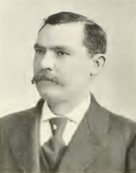 THOMAS J. DOUGHERTY Several
presidents have been born within the borders of
the state of Ohio; and from Ohio have come many of
the progressive citizens of the Northwestern
states. Thomas J. Dougherty, postmaster at
Northfield, Minnesota, was born at Marietta, Ohio,
on September 15, 1856. When he was about three
years old his parents removed from Ohio to
Wisconsin, settling on a farm in St. Croix County.
He received his early education in the public
schools of the same county, and later spent two
years in the St. Croix County Collegiate and
Military Academy, a school which flourished for a
short time at Hudson, Wisconsin. He then
taught school in St. Croix and Polk counties for
several terms. THOMAS J. DOUGHERTY Several
presidents have been born within the borders of
the state of Ohio; and from Ohio have come many of
the progressive citizens of the Northwestern
states. Thomas J. Dougherty, postmaster at
Northfield, Minnesota, was born at Marietta, Ohio,
on September 15, 1856. When he was about three
years old his parents removed from Ohio to
Wisconsin, settling on a farm in St. Croix County.
He received his early education in the public
schools of the same county, and later spent two
years in the St. Croix County Collegiate and
Military Academy, a school which flourished for a
short time at Hudson, Wisconsin. He then
taught school in St. Croix and Polk counties for
several terms.
Mr. Dougherty came to Minnesota in 1876 and
became a citizen of Northfield, Rice County, where
he has lived ever since. He first entered the
office of Perkins & Whipple as a law student
and remained with them until 1871, when he was
offered, by Warder, Mitchell & Co.,
manufacturers of the Champion reapers and mowers,
the responsible position of general collector for
Minnesota, Wisconsin, Iowa and North and South
Dakota. He accepted the offer thus made him and
held the position for eight years, resigning in
1877 to enter upon the practice of law. He went
into partnership with O. F. Perkins. This firm
continued until 1893, when Mr. Perkins died, and
R. J. Drake succeeded to his part of the business.
The new firm thus formed still exists as Drake
& Dougherty. In politics
Mr. Dougherty is a Democrat, and has been a
prominent figure in the political affairs of
Northfield and Rice County.
At one time he was nominated
by the Democratic party of his county as a
candidate for judge of probate. He is a member of
the Northfield city council, and the citizens of
the Third ward have found his services so valuable
that they have retained him constantly as their
councilman since 1890. He has also served as a
member of the school board during the last four
years. In January, 1896, President Cleveland
appointed him postmaster at Northfield. On October
5, 1882, at Hazelwood, Minnesota, he married Miss
Katie Hennessy, of that place. Mrs. Dougherty died
Nov. 26,
1896.
 DONALD GRANT
The fame of Donald Grant does not rest upon that
fact alone, but it is interesting to note at the
beginning of this sketch that to Mr. Grant is due
the credit of having, as a contractor and railroad
builder, laid more miles of track in one day than
were ever built by any other road builder in the
country. In the construction of the Great Northern
from Minot to Helena, during the year 1887, he
laid in one day ten and one half miles of track
and on several occasions laid over eight miles a
day the same season. DONALD GRANT
The fame of Donald Grant does not rest upon that
fact alone, but it is interesting to note at the
beginning of this sketch that to Mr. Grant is due
the credit of having, as a contractor and railroad
builder, laid more miles of track in one day than
were ever built by any other road builder in the
country. In the construction of the Great Northern
from Minot to Helena, during the year 1887, he
laid in one day ten and one half miles of track
and on several occasions laid over eight miles a
day the same season.
Donald Grant was born December 10, 1837, in
Glengarry County, Ontario. His father, Alexander
Grant, was for thirty years sheriff of that
county. His mother was Catharine Cameron, a native
of Scotland.
Both father and mother were Highlanders,
the ancestors on both sides having come from that
sturdy race of people. Mr. Grant is six feet four
in height, but so well proportioned that his
unusual stature is not often noted except as he
appears with men of ordinary size. Donald’s first
dollar was earned working at seventy-five cents a
day on an Ohio farm, where he had gone as a young
man in search of his fortune. Carefully saving
every possible penny he finally accumulated
several hundred dollars. He took the money home to
his parents in Canada, only to find when he
arrived there that it was the issue of “wild cat”
banks that had failed before he had the
opportunity to use the money.
Mr. Grant began the business of railroad
building in 1865. His first contract was a small
one for ties for the Minnesota Central, now the
Iowa & Minnesota Division of the Milwaukee
road. He was also engaged in track laying on the
same road from Faribault to the Iowa boundary.
From that time until the present, over thirty
years, he has been a railroad contractor. For the
first fifteen years his career was one of varying
success. The remaining fifteen years have been
attended with remarkable success. Mr. Grant
belongs to a class of men now passing away who
introduced the railroad into the wilderness and
the frontier, the forerunner of civilization. He
was engaged in the building of parts of the Iowa
& Minnesota road, the Hastings & Dakota,
the Minneapolis & St. Louis, the Duluth &
Winnipeg, the Southern Minnesota, the Wisconsin
Central, the Canadian Pacific, the Mesaba road,
the Winona & Southwestern, the St. Paul &
Duluth and the Northern Pacific.
Mr. Grant is a Republican, but
has never sought political preferment. He was,
however, induced by the citizens of Faribault to
accept the office of mayor. He accepted it for two
terms, 1892 and 1893, chiefly from a sense of
duty, being indorsed by both Democrats and
Republicans for both terms. His business interests
are large. The principle of economy and thrift
which he adopted at the outset, together with his
great business sagacity, has enabled him to
accumulate a handsome fortune. He is interested in
manufacturing enterprises, and is director in
three banks. Notwithstanding the multiplicity of
his business connections, he is a man of genial
nature, and his success is largely due to his
agreeable manners and superior business ability.
He enjoys an enviable reputation as a man of
integrity, and has the confidence of businessmen
in a large degree. He is the chief owner of the
Venezuelan concession to the company of
capitalists, known as the Orinoco Company, and is
also largely interested in the Rio Verde Canal
Company, of Arizona. Donald Grant’s wife’s maiden
name was Mary Cameron. They have had seven
children, six daughters and one son. Their names
are Samuel, Ellen, Katherine, Isabella, Emma, Mary
, and Margeret Jane.
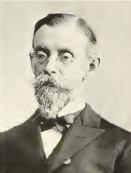 GEORGE HUNTINGTON has for
seventeen years been professor of logic and
rhetoric in Carleton College, Northfield,
Minnesota. He has also during this time frequently
supplied vacant pulpits in churches in the “Twin
Cities” and elsewhere throughout the state.
Professor Huntington. however, is
more widely known for his literary efforts. He is
almost constantly engaged in some form of literary
work. His literary labors began in his student
days and have been continued more or less
regularly ever since. “Shining Hours” was his
first book, a juvenile story published anonymously
by D. Lothrop & Co. Other books from his pen
are the “Spectre of Pratt’s Parish,” a satire on
making finance the dominating consideration in
parochial affairs: “The Rockanock Stage,” a story
of parochial life in a small village; “Nakoma.” a
story of pioneer days in Minnesota; “Kings and
Cupbearers,” a tale of college life in the West;
“Robber and Hero.” telling of the famous James
Younger raid at Northfield, and “Maud Brayton.” a
sequel to “Kings and Cupbearers.” Professor
Huntington for a year or more edited the Sunday
School Teacher, and for two or three years the
Scholar, He has also been a contributor to a
number of papers and periodicals, especially to
The Interior, of Chicago, for which he has written
both under his own name and under the pseudonym of
“Parson Penn,” and The Advance, also of Chicago,
for which he has furnished poems, articles,
letters of travels, short stories and serials,
many of his books being first published in serial
form in this periodical. GEORGE HUNTINGTON has for
seventeen years been professor of logic and
rhetoric in Carleton College, Northfield,
Minnesota. He has also during this time frequently
supplied vacant pulpits in churches in the “Twin
Cities” and elsewhere throughout the state.
Professor Huntington. however, is
more widely known for his literary efforts. He is
almost constantly engaged in some form of literary
work. His literary labors began in his student
days and have been continued more or less
regularly ever since. “Shining Hours” was his
first book, a juvenile story published anonymously
by D. Lothrop & Co. Other books from his pen
are the “Spectre of Pratt’s Parish,” a satire on
making finance the dominating consideration in
parochial affairs: “The Rockanock Stage,” a story
of parochial life in a small village; “Nakoma.” a
story of pioneer days in Minnesota; “Kings and
Cupbearers,” a tale of college life in the West;
“Robber and Hero.” telling of the famous James
Younger raid at Northfield, and “Maud Brayton.” a
sequel to “Kings and Cupbearers.” Professor
Huntington for a year or more edited the Sunday
School Teacher, and for two or three years the
Scholar, He has also been a contributor to a
number of papers and periodicals, especially to
The Interior, of Chicago, for which he has written
both under his own name and under the pseudonym of
“Parson Penn,” and The Advance, also of Chicago,
for which he has furnished poems, articles,
letters of travels, short stories and serials,
many of his books being first published in serial
form in this periodical.
Professor Huntington was born in Brooklyn,
Connecticut, November 5, 1835. He is the son of
the late Dr. Thomas Huntington, and Paulina Clark
(Huntington). Dr. Thomas Huntington was a
clergyman as well as a physician. He was not
only deeply interested in the subject of natural
science, but was also an enthusiastic student of
theological subjects. Jedidiah Huntington was a
clergyman as well as physithis sketch, was an
officer in the Revolutionary War. He entered as a
captain and was made colonel and Brigadier general
and a member of Washington’s staff, and on his
retirement was Breveted major general. He was
collector of customs at New London, Connecticut,
under four administrations; served as treasurer of
the state, and as a delegate to the convention for
the ratification of the United States
constitution. Moses Clark, the maternal
grandfather of Professor Huntington, was a
substantial farmer and prominent citizen of
Brooklyn, Connecticut.
George attended the district school and the
village academy, In the dominating influences of
his youth were received at his home. Here the boy
was taught Latin by his father and drawing by his
mother; surrounded by a cultured home circle he
learned to read and think seriously, and here
acquired the high character which he exhibited
later in life. When but seventeen \ears of age he
was teaching in a country school. It was at this
time, through revival meetings conducted by his
uncle, Rev. George Clark, that the youth became a
Christian, and joined the Congregational Church.
George’s parents, thinking that he had an special
aptitude for mechanical pursuits, apprenticed him
to the steam engine business in the shops of
Corliss & Nightindale, in Providence, Rhode
Island. In 1857 he went to Chicago to erect in the
Flour mill of Adams Brothers the first Corliss
engine used in that city, after which he returned
to Providence, and having completed his
preparatory studies, entered Brown University.
During his sophomore and junior years Mr.
Huntington regularly supplied the pulpit at the
Charles Street Mission, which he had helped to
found. His health gave way under the strain of
hard study and for a year he was compelled to live
in enforced idleness. The next year was partially
devoted to ministerial labors, and the year
following to theological study at Andover. He was
ordained in Central Village, Connecticut, in 1863,
which was his first field. His next
pastorate was in Charles Street Church, now the
North Church, Providence, Rhode Island, where he
remained five years. He removed from there to Oak
Park, Illinois, holding a pastorate at this place
for nine years. This he resigned in 1879 to accept
his present position as professor of rhetoric and
logic in Carleton College. Professor Huntington
was married, June 30, 1863, to Caroline A. Mason,
of Brooklyn, Connecticut. They have
had but one child, who died in
infancy.
 WILLIAM
FRANK SCHILLING In 1853 William Schilling came
with his parents from Philadelphia to Carver
County, Minnesota, and settled on a farm. A few
years later he located in business in St. Paul,
and was residing there when the war broke out. He
offered his services to the country as a member of
Company H, Fifth Minnesota, and served
continuously until the war closed, gaining the
rank of first lieutenant. After the war he
returned to St. Paul, where he was married to Miss
Mary Catherine Lallier. Shortly after they moved
to Hutchinson, Minnesota, where to them was born,
November 11, 1872. William F. Schilling, the
subject of this sketch. WILLIAM
FRANK SCHILLING In 1853 William Schilling came
with his parents from Philadelphia to Carver
County, Minnesota, and settled on a farm. A few
years later he located in business in St. Paul,
and was residing there when the war broke out. He
offered his services to the country as a member of
Company H, Fifth Minnesota, and served
continuously until the war closed, gaining the
rank of first lieutenant. After the war he
returned to St. Paul, where he was married to Miss
Mary Catherine Lallier. Shortly after they moved
to Hutchinson, Minnesota, where to them was born,
November 11, 1872. William F. Schilling, the
subject of this sketch.
William attended the schools of Hutchinson,
where he was under the tutelage of Hon. N. W.
Pendergast, now state superintendent of public
instruction. During the vacations of his last
three years at school he learned, in the
Hutchinson Leader office, the printer’s trade. It
was there he earned his first dollar, folding
papers for an old Washington hand press. After
about a year spent in St. Paul, he returned to
Hutchinson, and was employed for eighteen months
on the Leader. Again he returned to St. Paul,
where he was engaged in the printing business
until August 20, 1891, when he was employed to
take charge of the mechanical department of the
Appleton Press. He remained there for over a year,
serving also as assistant editor and
solicitor.
On April 6, 1895, he was employed as
foreman of the Northfield News, in connection with
which paper there was conducted one of the largest
job printing establishments in the state. Mr.
Schilling was placed in charge of this
establishment as foreman until the following
November, when the paper and its entire
establishment were turned over by the proprietor,
Hon. Joel P.
Heatwole, to C. H. Pierce and Mr.
Schilling, the latter serving in the capacity of
city editor, a position which he now holds.
Mr. Schilling was reared in the Catholic
faith, and is an active worker in advancing the
interests of that church. He is a man of
upright character and exemplary habits, a great
lover of books and the possessor of one of the
best reference libraries to be found in any
private home in the state. He is a member of the
Knights of Pythias. While engaged in the printing
business at St. Paul he became connected with the
Typographical Union of that city, and is said to
have been one of the youngest members ever
admitted to the society, entering as a full member
at the age of eighteen. When Mr. Schilling left
the Appleton Press to enter the services of the
Northfield News, the Press, in congratulating him
upon his advancement, spoke of him as a young man
of more than ordinary ability and industry, and as
belonging to that class which invariably achieve
success.
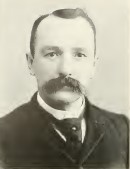 BENJAMIN
B. SHEFFIELD Mayor of Faribault, is one of the
younger and at the same time one of the very
successful business men of Minnesota. He has lived
in Faribault since he was a boy, and has grown up
among its people, and made a remarkable success of
what promised at the outset to be a losing
business. He is very popular in his home, and has
been twice elected mayor, the second time by a
combination of both parties and without
opposition. BENJAMIN
B. SHEFFIELD Mayor of Faribault, is one of the
younger and at the same time one of the very
successful business men of Minnesota. He has lived
in Faribault since he was a boy, and has grown up
among its people, and made a remarkable success of
what promised at the outset to be a losing
business. He is very popular in his home, and has
been twice elected mayor, the second time by a
combination of both parties and without
opposition.
Mr. Sheffield comes of good stock. His
father M. B. Sheffield, a well-known businessman,
was of a family which has always had the
reputation of unimpeachable integrity and honesty.
His wife was Miss Rachel Tupper, a daughter of a
prominent family in Nova Scotia, a first cousin to
Sir Charles Tupper now secretary of the Dominion
of Canada. B. B. Sheffield was born at Aylesford,
Nova Scotia, on December 23, 1860. His parents
moved to Minnesota in 1865, Mr. Sheffield becoming
a retail merchant at Faribault.
Benjamin grew up at Faribault and attended
the public schools, and later spending five years
at the Shattuck Military school, from which he
graduated in 1880 with honors. He took the first
oratorical prize, a gold medal, in 1877. He passed
the examination at Yale College soon after his
graduation from Shattuck, but for financial
reasons did not enter college, but immediately
went into business. Though
only nineteen years of age he assumed the
management of the Walcott Flour Mills for his
father. These mills were at that time four miles
from any railroad, and had been a losing business
for all previous owners. There was at that time an
indebtedness of $15,000 on the plant. In spite
of the obstacles young Sheffield made the project
go. For two years he actually did the work and
took the place of three men. At the end of that
time he had the satisfaction of seeing the
property on a sound financial basis, and in
succeeding years developed the business, brought
railroads to the mill doors, and increased the
capacity of the plant to one thousand barrels a
day. On November 31, 1895, the Walcott mills were
burned. While the mills were still burning Mr.
Sheffield telegraphed for contracting agents to
immediately plan new mills of one thousand barrels
capacity. He formed the Sheffield Milling Company
with a paid up capital of $200,000 had the new
mill completed and in operation in about six
months. In addition to the milling interest Mr.
Sheffield is president of the Crown Elevator
Company, owning and controlling a line of thirty
elevators in North and South Dakota and Minnesota.
Mr. Sheffield has been identified closely with the
progress of Faribault. He has
always been ready to foster any industry which
might advance his city, and he has helped public
enterprises with his personal office and his
private funds. He is president of the Security
Bank of Faribault.
In politics he has been consistently a
Republican, and served as vice president of the
city council for two years. He was
elected mayor for the first term by the largest
majority in the history of the city, and upon his
second candidacy there was no disposition. Mr.
Sheffield was married on July 18, 1889, to Miss
Carrie A. Crossette. They have had two children,
one of whom, Blanche aged five, is living. During his busy
business life Mr. Sheffield has acquired the art
of speech making and when occasion demands can
deliver a graceful, scholarly address. At the time
of the visit of the Episcopal Convention to
Faribault in 1805 Mayor Sheffield who is also
vestryman in Bishop Whipple’s Union Cathedral
Parish, made the address of welcome which was
regarded as a model of its
kind.
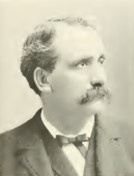 ALBERT
WILLIAM STOCKTON The subject of this sketch is a
member of the state senate from the twentieth
District, serving his second term. He is the son
of John C. Stockton and Martha J. Sippy (Stockton)
His father was a farmer in comfortable
circumstances in Wisconsin, living a very quiet
life, but honored and respected by his neighbors. ALBERT
WILLIAM STOCKTON The subject of this sketch is a
member of the state senate from the twentieth
District, serving his second term. He is the son
of John C. Stockton and Martha J. Sippy (Stockton)
His father was a farmer in comfortable
circumstances in Wisconsin, living a very quiet
life, but honored and respected by his neighbors.
Albert
William Stockton was born in Kosciusko County,
Indiana, March 30, 1844. he removed with his
parents to Richland County. Wisconsin, in the fall
of 1855. He lived on the farm with his parents
until the outbreak of the war, receiving a common
school education. On August 22, 1862, he enlisted
in Company 11, 25th
Wisconsin
Volunteer Infantry, going into camp at La Crosse.
In September the regiment was ordered to Ft.
Snelling to participate in the Indian war then
raging, where the regiment was divided, the right
wing going up the Minnesota river and the left
going up the Mississippi, the companies being
located at different points.
The company in which Mr. Stockton was
enlisted was stationed at Alexandria. In December
it was ordered to report at Ft. Snelling, and from
there went to Camp Randall, Madison, Wisconsin. In
February, the following year, the company went
South, the first stop being made at Columbus,
Kentucky. Mr. Stockton has an honorable war
record. He served with his company continuously,
not losing a day from sickness or otherwise,
participating in all the battles in which the
company was engaged until June 14, 1864, when he
was severely wounded by a gun shot wound in the
right thigh, at the battle of Peach Tree Orchard,
in front of the Kennesaw Mountains, Georgia. Mr.
Stockton, like thousands of others, experienced
quite a serious time in various hospitals at
Resaca, Georgia: Chattanooga and Nashville
Tennessee: Madison and Prairie du Chien,
Wisconsin. In June, 1865, he was discharged with
his regiment at Madison. Wisconsin. He then
returned home and for several years was engaged as
a clerk in a general store. In August, 1872, he
removed to Farinbault, Minnesota, where he has
since resided.
Mr. Stockton has occupied many
positions of public trust. He served as deputy
county auditor of Rice County for twelve years. He
then held the position of assistant cashier of the
First National Bank of Faribault for two years. In
1886 he formed a partnership and has been engaged
in the manufacture of flour and furniture ever
since that time. He has, however, always taken an
active interest in all enterprises tending to
build up and promote the best interests of his
city and county generally. For ten years Mr.
Stockton has acted as chairman of the board of
county commissioners of Rice County. In 1890 he
was honored by the people of his district with an
election to the state senate, and was re-elected
in 1894. He has been active in promoting
legislation lor the good of the community having
served on various committees and occupied a
position on the finance committee each term. In
the session of 1895 he was chairman of the
railroad commission. Mr. Stockton is held in
general esteem by all who know him for his public
spirit as well as for his admirable personal
character.
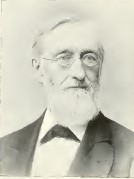 JAMES WOODWARD STRONG The above name is
inseparably associated with that of Carleton
College at Northfield, which is recognized as one
of the leading educational institutions of the
Northwest. Mr. Strong has been president of this
college since its organization in 1870, and to him
is due the credit of bringing it to the high plane
which it occupies at the present time. Dr. Strong
was born of Puritan ancestry; he is a descendant,
on the paternal side, of Elder John Strong, who
came to America in 1630, and was the first ruling
elder in the church at Northampton, Massachusetts,
where he died in 1699. about ninety-four years of
age. This founder of the American branch of the
Strong family was the father of eighteen children,
most of whom had large families. Many of their
descendants have been prominent in the history of
this country—notably Governor Caleb Strong of
Massachusetts, and William Strong of the United
States supreme bench. On the mother’s side the
family connections were with the first president
of Dartmouth College (President Eleazer Wheelock)
and Prof. Bezaleel Woodward, who were in the fifth
and sixth generation direct descendants from Miles
Standish.
Elijah Gridley Strong, the father of the
subject of this sketch, was born in Brownington,
Orleans County, Vermont, in 1803. He was a farmer
and a merchant in moderate financial circumstances
and a man of the strictest integrity. He was
active in public affairs, served his county as a
sheriff for twelve years, and was a leader in the
advancement of the religious and educational
interests of the community in which he lived. In 1848 he
moved with his family to Montpelier, Vermont, and
three years later to Beloit, Wisconsin, where he
died in 1859. His wife, Sarah Ashley Partridge
(Strong), was a native of Norwich, Vermont, coming
of a family prominent in military affairs. She was
left an orphan in infancy and was brought up by
her uncle. Rev. James Wheelock Woodward, who held
a pastorate in her native town. She was a woman of
unusual strength of character, combined with
delicacy and refinement. Her family government was
almost ideal, and her memory is held in fond
remembrance by her children. She died at Beloit,
Wisconsin, in June 1865. JAMES WOODWARD STRONG The above name is
inseparably associated with that of Carleton
College at Northfield, which is recognized as one
of the leading educational institutions of the
Northwest. Mr. Strong has been president of this
college since its organization in 1870, and to him
is due the credit of bringing it to the high plane
which it occupies at the present time. Dr. Strong
was born of Puritan ancestry; he is a descendant,
on the paternal side, of Elder John Strong, who
came to America in 1630, and was the first ruling
elder in the church at Northampton, Massachusetts,
where he died in 1699. about ninety-four years of
age. This founder of the American branch of the
Strong family was the father of eighteen children,
most of whom had large families. Many of their
descendants have been prominent in the history of
this country—notably Governor Caleb Strong of
Massachusetts, and William Strong of the United
States supreme bench. On the mother’s side the
family connections were with the first president
of Dartmouth College (President Eleazer Wheelock)
and Prof. Bezaleel Woodward, who were in the fifth
and sixth generation direct descendants from Miles
Standish.
Elijah Gridley Strong, the father of the
subject of this sketch, was born in Brownington,
Orleans County, Vermont, in 1803. He was a farmer
and a merchant in moderate financial circumstances
and a man of the strictest integrity. He was
active in public affairs, served his county as a
sheriff for twelve years, and was a leader in the
advancement of the religious and educational
interests of the community in which he lived. In 1848 he
moved with his family to Montpelier, Vermont, and
three years later to Beloit, Wisconsin, where he
died in 1859. His wife, Sarah Ashley Partridge
(Strong), was a native of Norwich, Vermont, coming
of a family prominent in military affairs. She was
left an orphan in infancy and was brought up by
her uncle. Rev. James Wheelock Woodward, who held
a pastorate in her native town. She was a woman of
unusual strength of character, combined with
delicacy and refinement. Her family government was
almost ideal, and her memory is held in fond
remembrance by her children. She died at Beloit,
Wisconsin, in June 1865.
James Woodward Strong was born at
Brownington, Vermont, September 29, 1833. His
early education was received in a district school.
Later he entered an academy at Montpelier, Vermont
which was under the charge of Nathaniel G. Clark,
who became secretary of the American Board of
Foreign Missions, and to whose personal influence
young Strong owed a great deal in the shaping of
his character. When but thirteen years of age the
lad earned his first money working in a printing
office in Irasburg, Vermont. from his fifteenth to
seventeenth year he clerked in a bookstore at
Burlington, Vermont. When his
family came West and settled at Beloit, Wisconsin.
James came with them and soon became a student at
Beloit College, while pursuing his studies he was
successively teacher in a district school,
telegraph operator, city clerk and city
superintendent of schools. He graduated as
valedictorian of his class in July 1858. Overwork
in college caused him a serious optical difficulty
and during his senior year his lessons were
learned by hearing alone.
After leaving college he was for a few
months a telegraph operator and a reporter at
Madison, Wisconsin. Having, however, decided to
study for the ministry, he entered the Union
Theological Seminary at New York, from which he
graduated in 1862. For two years he held a
pastorate in the Congregational Church at
Brodhead, Wisconsin, whence he came in January,
1865, to the Congregational Church at Faribault.
In 1870 Mr. Strong was elected president of a
college which three years before had been located
at Northfield, Minnesota. At this time, however,
the college was more of an idea than an
accomplished fact. Mr. Strong’s executive force
and abilities as a leader and organizer soon
inspired confidence and won friends for the
enterprise. Through his influence William Carleton
of Charlestown, Massachusetts, made an
unconditional donation of fifty thousand dollars,
and under his administration Carleton College has
become one of the foremost educational
institutions of the Northwest. Forbidden by his
eyes, which have been a source of trouble to him
since his college days, President Strong has been
denied the privilege of special literary work and
has written but little for publication, but has
devoted himself successfully to laying the
foundations of an institution broad in its
curriculum, thorough in its culture and Christian
in its spirit. The
post-graduate course of Carleton’s “School of Pure
Mathematics and Practical Astronomy,” and its
special astronomical work and publications, have
given the institution a reputation in Europe as
well as in America. President Strong is one of the
charter members of the Minnesota Congregational
Club. For nearly a score of years he has been
president of the Minnesota Home Missionary
Society, and also a corporate member of the
American Board of Foreign Missions.
For the past thirty years he has been a
member of nearly every national council of the
Congregational body held in this country. On
September 3, 1861, he was married to Mary
Davenport of Beloit, Wisconsin, a direct
descendant of Elder John Davenport of the New
Haven Colony. Three children have resulted from
this union, William Brinsmade, Edward Williams and
Arthur Dunning.
The
information on Trails to the Past ©
Copyright
may be used in personal family history
research, with source citation. The pages in
entirety may not be duplicated for publication in
any fashion without the permission of the owner.
Commercial use of any material on this site is not
permitted. Please respect the wishes of
those who have contributed their time and efforts
to make this free site possible.~Thank
you! |



